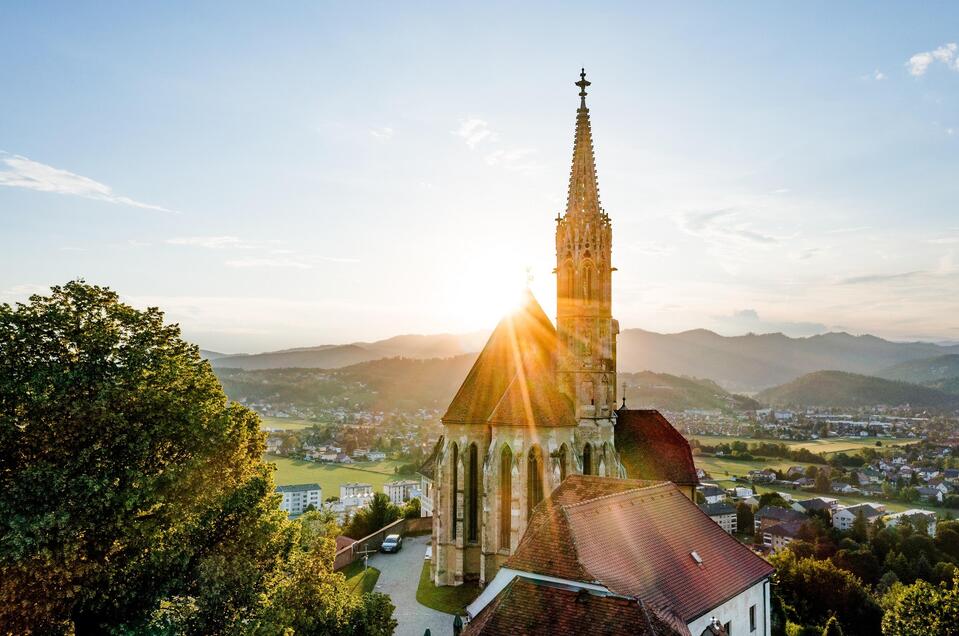Maria Strassengel Pilgrimage Church
Gratwein-StraßengelThe pilgrimage church Maria Straßengel is one of the most beautiful high gothic sacral buildings in Austria and is known as the "Steirischer Steffl ".
The sight of the pilgrimage church of Maria Straßengel a few kilometres north of Graz is like something out of a fairy tale. The small church settlement rises up on a hill, visible from afar. The vicarage, tavern, the neat baroque "new building" and the enchanting pilgrimage church form the pretty ensemble. With its filigree sandstone tower, rich architectural sculpture and original stained glass from the 14th century, it is one of the most important High Gothic sacred buildings in Austria.
As early as the 12th century, people made pilgrimages to an image of the Virgin Mary on Strassengler Berg, which Margrave Otakar III had given to the monks of Rein Monastery. About a hundred years later, a second object of veneration was added: the root cross that had grown out of a fir tree on the church hill and shows a realistic image of the Crucified. Even the most modern examinations have not been able to find any carving traces on the cross, which is about 18 cm high. Today's pilgrimage church was built around the middle of the 14th century and is attributed to the Viennese building lodge that erected St. Stephen's Cathedral. The "Steirischer Steffl" is dominated by the 48 m high openwork tower. A closer look reveals portrait-like depictions of secular and ecclesiastical dignitaries of the time as well as life-size figures of Mary and seven angels. Above the portals of the church are impressive reliefs, and inside there are ornate column capitals and keystones. Colourful stained glass bathes the church interior in mystical light. Most of them date from the second half of the 14th century and depict legends of saints and the Virgin Mary as well as the Passion of Christ.
On the altars of St. Sebastian and St. Nepomuk, two Baroque paintings created for Maria Straßengel in 1781 by the important Austrian painter Johann Martin Schmidt (Kremser Schmidt) are impressive. On the sound lid of the rococo pulpit, angels hold a replica of the root cross in their hands. The original root cross, after it was stolen and recovered in 1976, can now only be seen at church services. The altarpiece "Maria im Ährkleid" from around 1430, which was stolen at the same time, remained lost and was replaced by a copy.
Contact
Am Kirchberg 16
8111 Gratwein-Strassengel














